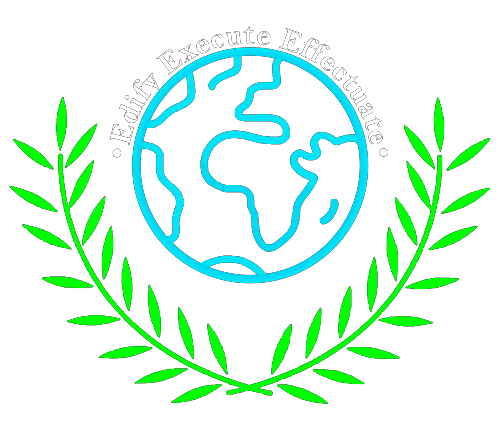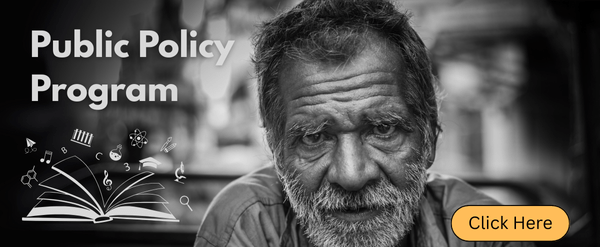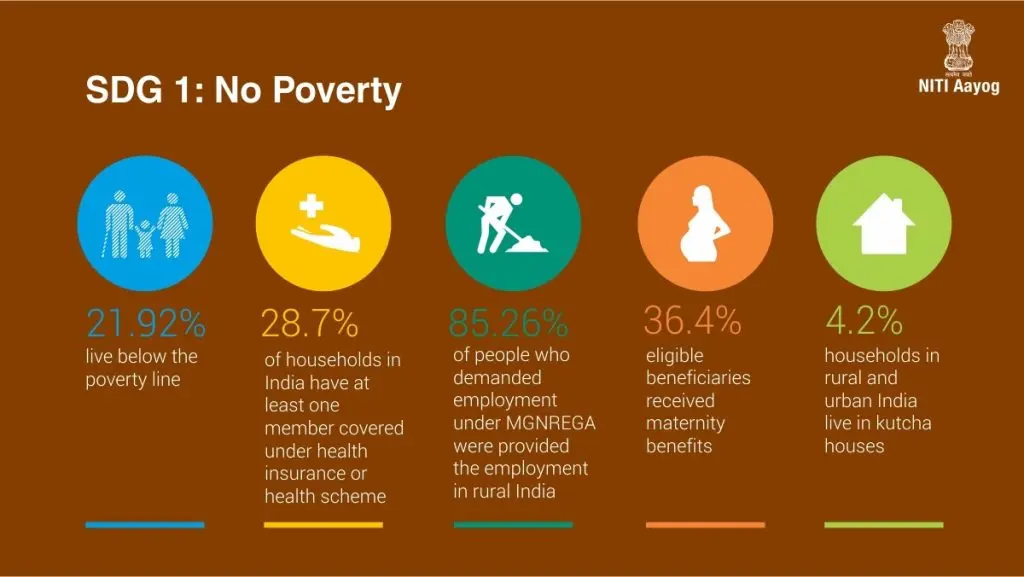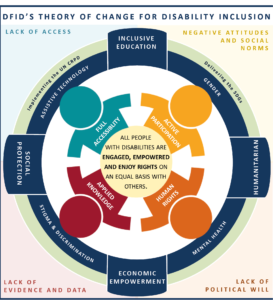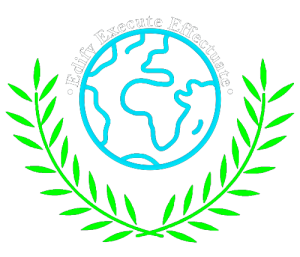By Vasundhra B
A Review of India’s Policy Initiatives and Research Gaps in Achieving Sustainable Development Goal 1
Sustainable Development Goal 1 (SDG 1) aims to “end poverty in all its forms everywhere” by 2030. The objective of SDG 1 is to eradicate extreme poverty, reduce poverty by at least half, implement social protection systems, ensure equal rights to economic resources, and build resilience to environmental, economic, and social disasters. In view of that, India has taken various policy initiatives to address SDG 1. The National Institution for Transforming India (NITI Aayog) is monitoring the progress of SDG 1 in the country. Some of the major initiatives include the Rashtriya Swasthya Bima Yojana (RSBY), a health insurance scheme for the poor. The government has also focused on slum rehabilitation and crop diversification for poverty alleviation. Notable case studies include the Pradhan Mantri Jan Dhan Yojana (PMJDY), which has significantly increased financial inclusion by opening millions of bank accounts for the unbanked, and the Direct Benefit Transfer (DBT) scheme, which aims to reduce leakages in welfare schemes by transferring subsidies directly to the beneficiaries’ bank accounts. However, challenges such as lack of awareness, poor implementation, delayed wage payments, and limited access to healthcare have hindered the success of these initiatives. The review highlights the need for better monitoring, improving infrastructure, market linkages, and financial support for sustainable livelihood programs. Additionally, it emphasizes the importance of research on income diversification strategies, improving the quality of veterinary services, and addressing discomfort and distress during slum rehabilitation.
Historical Context of Poverty Alleviation in India
Following its 1947 declaration of independence, India encountered formidable economic obstacles. The economy of the nation was undeveloped, with most of the advancements occurring in the robust cities. For 83% of those living in rural areas, agriculture was their primary source of income, although productivity was low (Thakur et al., 2021). Growing populations combined with the shortage of alternative jobs led to rural residents facing long-term unemployment and low incomes. Since 80% of India’s deprived lived in rural areas, the government realised the need to tackle this issue, thus in 1952, India introduced Community Development as its first initiative to reduce poverty (Thakur et al., 2021). This initiative marked the beginning of systematic efforts to uplift the rural poor. As a result, more focused job initiatives were introduced in the 1980s. In an effort to facilitate more jobs for the underemployed and unemployed in rural areas, the National Rural Employment Programme (NREP) was launched in 1980. It aimed to produce 300–400 million man-days of work in one year’s period of time while fostering the development of useful communal resources. The Rural Landless Employment Guarantee Programme (RLEGP) was also introduced in 1983. Its main objectives were to give every landless rural household member 100 days of work and to build durable assets that would support rural infrastructure. In 1989, these initiatives were combined to become the Jawahar Rozgar Yojana (JRY). JRY prioritised freed bonded labourers, Scheduled Castes and Scheduled Tribes, and the population below the poverty line. The program established a target of 30% employment for women and prioritised unskilled labour over mechanised jobs to expand employment prospects. The program involved Panchayat Raj Institutions in the construction of assets based on rural needs and functioned primarily during lean crop seasons.
Later, a part of JRY was combined with the Employment Assurance Scheme (EAS), which was implemented in 1,775 backward blocks, in 1993–1994. For 100 days of unskilled labour during low agricultural seasons, the EAS paid minimum wage. However, many of these programs prioritised wage employment as opposed to asset building and thus led to poorly planned, short-term development. The first program was the government’s answer to increasing urban poverty at the time that was partly caused by rural-urban migration in 1985. This meant a significant shift in strategies for poverty reduction because it recognized that being poor is not only confined to rural areas. As per Mahatma Gandhi National Rural Employment Guarantee Act (MGNREGA) of 2005, every rural household with adult members volunteering for unskilled manual work has the opportunity to be guaranteed 100 wage days within a financial year. It marked a substantial change in approach from earlier welfare-oriented programmes that focused on employment rights instead of welfare needs. In recent years India has adopted a more holistic set of policies towards reducing poverty that is consistent with Sustainable Development Goals (SDGs) as enshrined by the UN. Under this premise, the current Indian government’s policy also features targeted anti-poverty schemes implemented with a view to achieving full employment; which are assessed through national SDGs target indices and sustaining robust GDP growth rates. Employment, social security and meeting basic needs constitute three main kinds of existing government action today. The National Food Security Mission, Ayushman Bharat, Deendayal Upadhyay Grameen Kaushalya Yojana, Pradhan Mantri Jeevan Jyoti Beema Yojana (PMJJBY), National Rural Livelihood Mission, National Social Assistance Programmes (NSAP), and Pradhan Mantri Awas Yojana (PMAY) are some of the notable initiatives.
In brief, the chapter discusses India’s poverty alleviation efforts since 1947. It brings focus on the transition from projects with a rural focus to more all-encompassing approaches, such as urban poverty initiatives. The Community Development program of 1952, the many employment schemes of the 1980s, and the MGNREGA of 2005 are considered significant milestones. Current strategies address employment, social security, and basic services through a number of programs that are in line with the UN Sustainable Development Goals.
Poverty alleviation programmes from 1950s to 1970s
India’s post-independence era witnessed the introduction of the Community Development Programme in 1952, marking the start of the country’s serious actions to reduce poverty. At the time, 80% of India’s impoverished lived in rural areas, so this project represented the first organised attempt to combat poverty (Thakur et al., 2021). Accepting the salient assumptions of the regulated system, during the first fifteen years of its premise, the economy appeared optimistic, as highlighted by an average absolute GDP per annum growth rate of 4.1%. While this did not reach the targeted 5 percent, it is still better than the prior growth rates before independence (Ahluwalia, 2019). The government began to realise that more concentrated efforts had to be made. The very first wage employment scheme was launched in 1960-61, the Rural Manpower Programme (RMP) whose initial employment target was to reduce poverty scale in the rural region. The effective achievement of RMP objectives and goals of 5 million people for 100 days by the end of the Third Five-Year Plan. However it could have incurred only Rs 30 crore, the expected amount was Rs 150 crore and the utilisation stopped at 1968–1969 due to constraint on resources. Although the aim was not achieved, the RMP created 137 million man-days of employment (Thakur et al. , 2021). This evolved to more general techniques in the 1970s. Another major infusion was the Crash Scheme for Rural Development in 1971 whereby a view was to create one thousand places of employment annually through labour intensive activities in each region. The establishment of some durable capital like irrigation facilities, constructions of roads and avenues, and reclamation of wasting land were well intended. Even with a three-year funding of Rs. 142.74 crore, the venture had problems with low-quality assets and underpaid staff. The Food for Work programme was introduced in 1977 so that economically downtrodden people get required food as well as money. This it was able to achieve by harnessing the food grains’ distribution with paid workers successfully. As pointed out by Thakur, the creation of this program led to the production of 979. It was admittedly the break-up of 32 million man-hours of labour between 1977–1978 and 1979–1980, and was more popular in the rural belt. At the same time, the Maharashtra Employment Guarantee Scheme that was launched in early 1971 was quite a model instrument, although it also had certain drawbacks regarding targeting and accessibility (Murgai & Ravallion, 2005).
In conclusion, throughout the period of 1950s to the 1970s India’s efforts to tackle poverty moved from approaches such as rural area development to specific employment generation programmes. These efforts set the stage for subsequent plans to address the poverty problem despite all the limitations and challenges which were highlighted above. Economists and other organisations closely working with these programmes believe that poverty can only be fought through a multi-sectoral approach reaching out to the poor in the rural areas and in the cities.
Poverty alleviation programmes from 1971 onwards till 1990s :
From 1971 to the 1990s, India’s tactics for reducing poverty witnessed a notable change towards more focused and all-encompassing approaches, building on the achievements of the 1950s and 1960s. Numerous important programs that attempted to address the complex nature of poverty in both rural and urban regions were introduced during this time.
A major landmark affecting India’s anti-poverty drive of the 1970s that everyone agrees on is the launching of the Integrated Rural Development Programme (IRDP) in 1978. A new dimension of tackling the issues of poverty was initiated with this program because it adopted a number of activities meant to implement a masterpiece change in the rural areas of Kenya. The IRDP aimed at providing rural poor people with productive assets through which they could be productive and enhance their capability in earning income (Borbora and Mahanta, 2001). The Training of Rural Youth for Self Employment which is widely known as TRYSEM was initiated in the year 1979 with an aim of building capacity of rural youths to engage themselves in income generating activities. Hence, these programs were much more oriented towards the creation of sustainable livelihoods compared to the previous focus on wage employment. Since the early 1980s, the poverty reduction management began to focus on a broad framework as opposed to the earlier singular approach to combat poverty. Thus, to increase the available employment opportunities in the rural sector, public works were established to form the National Rural Employment Programme (NREP) in 1980. Similarly, the NREP was initiated to fulfil both the emergency of employment opportunities now as well as to construct the infrastructure of the rural nation. After the NREP, the Rural Landless Employment Guarantee Programme (RLEGP) was launched in 1983 which assured 100 days employment to landless labour in a year. This program was important because it dealt with the fact that ‘landless labour’ is a highly vulnerable group and tried at least to provide them with some form of insurance. Another microcredit program known as the Development of Women and Children in Rural Areas (DWCRA) was initiated in 1982-83 due to acknowledgment of the gender aspect of poverty. This programme especially focused on enhancing social returns of the rural women via formation of ‘’self-help groups’ and other income generating activities. In fact, the DWCRA was a conducive vehicle for highlighting gender issues to an uppermost position regarding priorities in poverty fighting initiatives. Policies for such specialised sectors and other selective interventions were started in the 1970s and 1980s to realise that these methods were inefficient in a controlled economy. Growth rate at this time in India was lower than other South East Asian countries as Ahluwalia (2019) has also mentioned and this gap was expanded in the 1980s when China’s reform initiated delivering results. From this insight knowledge emerged for reconsideration of policies of India to eradicate poverty. At the end of the 1980s the government unveiled the JRY, which amalgamated the RLEGP and NREP into a bigger program of rural employment creation in 1989. By this initiative, India wanted to develop a profitable and useful commonwealth which can improve the employment situation for the rural poor, most of whom are underemployed or unemployed. The implementation and targeting issues remained valid during this period as well. Still, due to some reasons such as corruption, feudal system, and some of the strong rooted social issues some of the states were backward in terms of social and economical development, all these aspects were well defined and explained through the status of Bihar’s economy. The high poverty rates especially in rural areas after the Bomas accord on poverty alleviation showed that poverty is complex and that the above mentioned programmes were insensitive to causes of poverty. It was clear by the early 1990s that although these initiatives had reduced poverty to some extent, the intended degree had not been attained. Although the percentage of people living in poverty in Asia had decreased from over 50% in the middle of the 1970s to 18% in 2004, India continued to face formidable obstacles, with 25% of its people living below the poverty line (Borbora and Mahanta, 2001).
In summary, from the 1971 to the 1990s, India implemented a wide range of programs aimed at reducing poverty, each focusing on a different facet of both rural and urban poverty. These programs marked a change from wide-ranging rural development to more targeted interventions that addressed women’s empowerment, employment, and skill development. These programs set the basis for more reforms in the decades that followed by highlighting the need for ongoing innovation and adaptation in measures for reducing poverty, even as they also laid significant groundwork and saw some degree of success.
Shift towards Urban Poverty Alleviation (1985 onwards) :
Recognising the emerging challenges of urban poverty, India embarked on a major policy reform in the strategy for alleviating poverty in 1985. When launched initially as a pilot in the year 1985, the three basic objectives of Urban Basic Services for the Poor (UBSP) were specified as empowerment, mobilisation and organisation at the community level. A little later, the government came up with the Nehru Rozgar Yojana (NRY) in 1989, which had three sub-schemes: Scheme for Urban Micro Enterprises (SUME), Scheme for Urban Wage Employment (SUWE), and Scheme for Housing and Shelter Upgradation (SHASU). Building upon such initiatives, the then Prime Minister’s Integrated Urban Poverty Eradication Programme was undertaken in 1995, specifically with regard to the issues of house improvement and sanitation, providing employment, and basic services, upgrading the shelters for environmental betterment. This was merged with the Prime Minister’s Integrated Urban Poverty Eradication Programme (PM IUPEP) and NRY in the urban wage employment and self-employment-based programme, Swarna Jayanti Shahari Rozgar Yojana (SJSRY), in 1997, having Community Development Societies for identifying recipients. However, certain hurdles continued to be there in the way of these efforts; like, identification of the poor was very difficult, organisation of the poor into SHGs (Self help group) was not emphasised, capacity building was totally lacking, credit flow for self-employment was not sufficient, and skill development was not integrated. The government continued to respond to these inbuilt maladies by launching the National Urban Livelihood Mission in 2013. Through SHGs, the NULM sought to lower poverty and vulnerability among the urban poor by giving them access to possibilities for skilled wage employment and lucrative self-employment. The NULM also sought to house the urban homeless and addressed the issues raised by street sellers (Thakur et al., 2021). Meanwhile, the government implemented the Pradhan Mantri Jan-Dhan Yojana (PMJDY) in 2014, realising the significance of financial inclusion and granting disadvantaged populations access to a range of financial services, including pensions, loans, insurance, and banking (Kanagaraj, S, 2022). In addition, the Ayushman Bharat initiative was introduced to tackle the pressing problem of healthcare in 2018. It aims to provide health insurance coverage of up to INR 5,00,000 per family annually and targets over 10 crore families from impoverished and vulnerable backgrounds (Kanagaraj, S, 2022). In addition, the government launched the “Housing for All by 2022” initiative to finance low-income groups to construct their own homes with the necessities of life, and the Saubhagya scheme sought to give every household access to energy (Kanagaraj, S, 2022). Yet, there are still obstacles in the way of reducing urban poverty despite these extensive efforts. For instance, Kusuma, Pal, and Babu (2018) discovered that just 18% of urban impoverished people had access to health insurance, and that the Rashtriya Swasthya Bima Yojana (RSBY) covered just 9.4% of eligible households. Moreover, very few people had any information about health insurance schemes, especially those who have recently migrated and those residing in disadvantaged regions. Therefore, with such highly limited coverage and scope, it is questionable whether schemes such as RSBY can accomplish the objective of health equity among the urban poor (Kusuma, Pal, & Babu, 2018). Even as India has made phenomenal progress since 1985 in the reduction of urban poverty, the challenges that remain in its way to combat it are weak access to quality healthcare, inadequate insurance coverage, and improvement in targeting and program implementation.
Briefly, from 1985 up until now, the attempts to alleviate urban poverty in India have been significantly different: they ranged from mere provision of basic services to comprehensive livelihoods and social securities (some important initiatives such as Ayushman Bharat, PMJDY, NRY, SJSRY, NULM and UBSP) whose focus was on financial inclusion, healthcare and employment. Nonetheless, despite all these efforts by the coordinating agencies involved in urban poverty programmes; mobilising the poor; identifying beneficiaries; ensuring adequate credit flow and skill development for the beneficiaries remains among the major challenges faced by these organizations. Furthermore, insufficient coverage as well as understanding of health insurance schemes like RSBY have continued to hinder equity in healthcare delivery to urban poor people. In other words it is evident that reduction on urban poverty in India will require more sustained interventions aimed at closing implementation gaps and expanding access to quality services.
Evaluation and Impacts of Poverty Alleviation strategies
It has come to an agreement that poverty in India is continuing to persist despite India implementing various poverty alleviation strategies from the time it gained its independence. As for the Integrated Rural Development Programme (IRDP), some initiatives since the 1980s have positively influenced poverty reduction to a notable extent. In the study by Paul S (2007), poverty reduction among the claimants of IRDP as determined by the Foster-Greer-Thorbecke (FGT) poverty index has reduced by 22% meaning that the poverty level is lowering, the report says that there was a drop from 0.3989 in 1985 to 0.3117 in 1987. Over two third of families indicated improved economic status despite, only 7 percent of the households fell below the official poverty line. While in Himachal Pradesh the program has yielded the best results, in Haryana the outcomes were not so great. Thus, the effectiveness of the program varied widely from one state to the other. To reduce the level of unemployment among the youths particularly in the rural regions, the Training of Rural Young for Self Employment (TRYSEM) was developed. In Singh et al. (2004), the source identified that TRYSEM had a positive impact on the participants’ knowledge and practice where 72% of the participants expressed enhanced levels of knowledge and 44% of the participants expressed a perceived satisfaction with the level of skill enhancement. In addition, the trainees said it affected the operations of agriculture and animal husbandry, and the training influence on their farms and houses was positive, according to 55% of the trainees. Also, 56% of the beneficiaries assumed that the relative perception of societal economic positions has been enhanced in general. However, there were challenges in job and enterprise creation in TRYSEM; only 40% of the beneficiaries created enterprises; 24% failed to secure a job after training. They were established during the early 1990s with JRY, a rural Employment program. As stated by Neelakantan (1994), the output of employment generation by JRY was high, namely estimated at 809.20 and 782.10 million mandays in the 1991-1992 and 1992-1993 financial years. While an average JRY worker got a remuneration of only 3.81 man days of employment in a 30 day reference period, its effectiveness of providing the particular families with such a convenient type of employment was somewhat limited. However, there were problems in the implementation of the program, mainly inadequate training for leaders of panchayats, lack of JRY manuals in as many as one third panchayats in the sample surveyed. Interestingly, about 56.96% of the workers interviewed were not from low income families contrary to the target group of the program. Despite these demerits JRY was influential in improving infrastructure in the rural areas and in most occasions fer the target of providing the rural impoverished people with wage employment. But with the Mahatma Gandhi National Rural Employment Guarantee Act (MGNREGA) launched in the later years, the fight against poverty in rural India received support from another important mechanism. Referring to Rao (2018), MGNREGA improved the social and economic status of the recipients within Andhra Pradesh namely Vizianagaram district. Notably, the female gender stands to benefit most from the aspects of empowerment through the initiative. Sudhakar (2017) also reviewed that 74 percent of the readers select books with pictures. According to the observation of wage seekers forty percent of the total female wage seekers that took part in MGNREGA projects appreciated that the level of domestic financial status has improved after engaging in MGNREGA projects while the remaining 2% actually proved it. Also, regarding the index of wage seekers, rises in social empowerment were visible, and they consider MGNREGA as an opportunity for building social solidarity as well as emerging new social relations. Therefore, it can be pointed out that MGNREGA has enhanced the aspect of women’s earnings in cash and has provided them a better social standing through participation. Nevertheless, it remains a fact that there are challenges because, according to the current figures, the mean number of days of work through MGNREGA across the country is still below fifty, and different between the states and the regions.
In conclusion, each of these strategies to fight poverty has provided evidence in the fight against poverty and improving the quality of the rural population’s lives; however, there have been differences across regions on implementation of these strategies. Among all the programs, the ones that embed the acquisition of skills, attach value to women, offer a method of income generation—such as MGNREGA—are possibly the most efficacious ones. Still, to maximise the impact of poverty reduction, they need to focus on addressing the local disparities, enhancing the users’ capabilities, the improvement of infrastructure support and the provision of better quality and usage of the available resources. Thus, the improvement of the beneficiary selection, the use of the stricter criteria, and the increase of the monitoring volume and effectiveness are also crucial in order to enhance the effectiveness of the mentioned mechanisms in Poverty Alleviation and the well-being of the targeted population in terms of their socio-economic conditions. It has been identified that several of the implemented policies never fully achieved the intended objectives even though some have positive repercussions. It was also worth noting that some of the shortcomings mentioned concerned insufficient implementation and resource deficiency of the Rural Manpower Programme (1960–61). However, like the Crash Scheme for Rural Development initiated in 1971, the plans and implementation schemas that have been put in place have been poor. The implementation of the Maharashtra Employment Guarantee Scheme could not remain untainted with corruption practices and misuse of the scheme in the year 1971. Some of the issues reported were corruption practices and other logistical challenges that affected the Food for Work Programme (1977). The same problems concerning the implementation of a poor financial structure of the enclave and lack of supervision were attributed to the National Rural Employment Programme implemented in 1980. Last but not the least; the Rural Landless Employment Guarantee Programme initiated in 1983 was aggravated by the problems of delayed payments and bureaucratic apathy.
Conclusion
The review of India’s poverty alleviation policies since independence reveals a gradual evolution from broad rural development initiatives to more targeted, comprehensive programs addressing both rural and urban poverty. Key strategies like MGNREGA, PMJDY, and Ayushman Bharat have shown positive impacts on poverty reduction, financial inclusion, and healthcare access. However, challenges in implementation, awareness, and coverage persist across various schemes. The analysis suggests that while India has made significant strides in poverty alleviation, achieving SDG 1 by 2030 will require addressing implementation gaps, improving targeting mechanisms, and enhancing the reach and effectiveness of existing programs. This supports the research hypothesis that well-implemented, targeted measures backed by rigorous research can indeed enable India to achieve SDG 1, though significant challenges remain.
References:
Abraham, V. (2009). Employment Growth in Rural India: Distress-Driven? Economic and Political Weekly, 44(16), 97–104.
A. Markandya (2001), Poverty alleviation and Sustainable development: Implications for the management of natural capital, International Institute for Sustainable Development.
Ahluwalia, M. S. (2019). India’s economic reforms: Achievements and next steps. Asian Economic Policy Review, 14(1), 46–62. https://doi.org/10. 1111/aepr.12239
Banerjee, D. Poverty Eradication in India: A Study with Special Reference on SDG-1.
Bandyopadhyay, D. (1989). Poverty alleviation through special employment programmes in rural India. In M. Muqtada (Ed.), The elusive target: An evaluation of target-group approaches to employment creation in rural Asia (Vol. 17). Asian Regional Team for Employment Promotion.
Bhambu, Kritshaurya, Can India Achieve Sdg-1 by 2030: An Empirical Investigation of Potentials (February 5, 2020). Alochana Chakra Journal, ISSN: 2231-3990, Volume IX, Issue IV, April/2020, Page 5056-5068, Available at SSRN: https://ssrn.com/abstract=3594995
Bhushan, Tahini, Poverty Alleviation and Sustainable Development- The Case for India (September 23, 2011). Available at SSRN: https://ssrn.com/abstract=2044417 or http://dx.doi.org/10.2139/ssrn.2044417
Borbora, S. and R. Mahanta (2001) ‘Micro-Credit through Self-Help Groups and its Impact: A Case of Rashtriya Gramin Bank Vikas Nidhi Credit and Savings Programme in Assam,’ , Indian Journal of Agricultural Economics,56(3), pp.449.
Das, T. K. (2016). Mahatma Gandhi National Rural Employment Guarantee act (MGNREGA) as social safety net: Analysis of public works in Odisha, India. Review of Economic Perspectives, 16(4), 337–360. https://doi.org/10.1515/revecp-2016-0019
David, M. P. C. (2018). Sustainable development goals (SDGs)-challenges for India. Indian Journal of Public Health Research and Development, 9 (3), 1–5. https://doi.org/10.5958/0976-5506.2018.00172.9
Kanagaraj, E. (2006). Jawahar Rozgar Yojana in Tamil Nadu: An appraisal of districts’ performance. Social Change.
Kanagaraj, S. (Ed.). (2022, pp. 68-69). Inclusive growth for self-reliant India (1st ed.). Indian Council of Social Science Research.
Karan, A., Yip, W., & Mahal, A. (2017). Extending health insurance to the poor in India: An impact evaluation of Rashtriya Swasthya Bima Yojana on out of pocket spending for healthcare. Social Science & Medicine, 181, 83–92. https://doi.org/10.1016/j.socscimed.2017. 03.053
Kusuma, Y. S., Pal, M., & Babu, B. V. (2018). Health insurance: Awareness, utilization, and its determinants among the urban poor in Delhi, India. Journal of Epidemiology and Global Health, 8(1-2), 69-76. https://doi.org/10.2991/j.jegh.2018.09.004
M. Neelakantan. (1994). Jawahar Rozgar Yojana: An Assessment through Concurrent Evaluation. Economic and Political Weekly, 29(49), 3091–3097.
Murgai, R., & Ravallion, M. (2005). Employment Guarantee in Rural India: What Would It Cost and How Much Would It Reduce Poverty? Economic and Political Weekly, 40(31), 3450–3455.
Paul, S. (2007). The performance of the integrated rural development program in India: An assessment. The Developing Economies, 36(2), 117-131. https://doi.org/10.1111/j.1746-1049.1998.tb00213.x
Puhazhendhi, V., & Jayaraman, B. (1999). Increasing women’s participation and employment generation among rural poor: An approach through informal groups. Indian Journal of Agricultural Economics, 54(3).
Rao, N. N. (2018). Rural Development Programmes in India. www. jamshedpurresearchreview. com, 37-52.
Reddy, V. M. (1990). TRYSEM PROGRAM-A CASE-STUDY IN KURNOOL-SAMITI OF ANDHRA-PRADESH. Journal of Rural development, 9(2), 435-443.
Singh PK, Chudasama H (2020) Evaluating poverty alleviation strategies in a developing country. PLoS ONE 15(1): e0227176. https://doi.org/10.1371/journal.pone.0227176
Singh, R. P., Dutt, T., & Rao, D. U. M. (2004). Socio-economic impact of TRYSEM as perceived by the beneficiaries. Indian Research Journal of Extension Education, 4(1&2), 73-75.
Singh S, R J. Attainment of the sustainable development goal of poverty eradication: A review, critique, and research agenda. J Public Affairs. 2020; e2294. https://doi.org/10.1002/pa.2294
Srinath, P., & Sridhar, K. S. Program implementation and Effectiveness: The case of an Urban Poverty Alleviation Programme.
Sudhakar, V. (2017). THE IMPACT OF MAHATMA GANDHI NATIONAL RURAL EMPLOYMENT GUARANTEE SCHEME ON EMPOWERMENT OF WOMEN WAGE SEEKERS–A STUDY. Editorial Board, 6(12), 172.
Thakur A, Gautam R, Gupta E. Evolution of poverty alleviation programme in India. Int J Community Med Public Health 2021;8:4616-21.
Uke, L. Poverty: A Major Problem in India. POVERTY ALLEVIATION IN INDIA ISSUES & CHALLENGES, 313.
